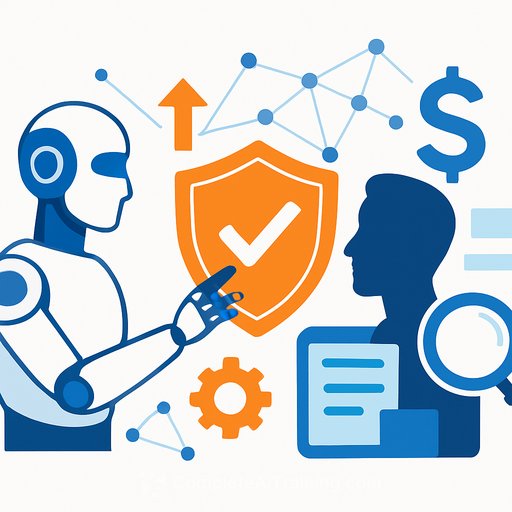How AI transforms BSA/AML risk management for institutions
October 14, 2025
Compliance is a board-level issue. With an estimated $2.7 trillion laundered globally each year, the exposure is clear and constant. Regulatory pressure, operational cost, and reputational stakes keep rising. The institutions that win set up risk assessment as an operating system, then layer AI to scale accuracy and speed. Source
Risk assessment is the control center
A strong BSA/AML risk assessment anchors policy, budgets, and controls. It aligns teams on where the exposure sits and which mitigations matter most. Done well, it keeps your institution compliant and resilient as products, channels, and rules change.
The three pillars managers must get right
1) Customer risk assessment
Know who you're doing business with and how they behave. Geography, industry, and transaction patterns set the baseline. Higher exposure includes clients tied to weak AML jurisdictions or sectors like gambling and remittances. KYC, CDD, and EDD keep oversight proportional to risk and help teams act early.
2) Product and service risk assessment
Some offerings carry greater exposure by design. Wire transfers, prepaid instruments, and crypto can enable anonymity or cross-border flow. Apply a risk-based approach: tighter controls, ongoing monitoring, and clearer usage limits where exposure is higher.
3) Transaction risk assessment
Transactions are your most visible signals. Look for anomalies: large or inconsistent payments, velocity spikes, and quick fund movements across borders. Transaction monitoring systems, machine learning, and AI-driven analytics help surface red flags and support timely SAR decisions.
What AI changes for BSA/AML leaders
AI pushes detection closer to real time, reduces noise, and standardizes decisions. It enriches alerts with entity context, prioritizes the work that matters, and reduces manual review load without diluting controls.
- Lower false positives and crisper alert triage
- Faster EDD reviews and SAR decisioning
- Better coverage across products, channels, and geographies
- Consistent audit trails and model documentation
Where Aiprise fits
Aiprise streamlines end-to-end BSA/AML risk assessment with AI-driven verification and monitoring. The suite includes advanced KYC and KYB checks, fraud scoring built on 100+ data sources, and a Compliance Co-Pilot that automates up to 95% of manual review work. With integration across 220+ countries, it supports onboarding and ongoing monitoring for institutions with international exposure. The result: stronger defenses, lower manual effort, and clearer regulatory confidence.
Implementation blueprint for managers
- Map your current risk model: customers, products, channels, and geographies. Clarify thresholds and escalation paths.
- Build the data foundation: identity data, payment rails, device signals, watchlists, case outcomes. Close gaps before tuning models.
- Integrate with TMS and case management: centralize alerts, deduplicate entities, and push risk scores into investigator workflows.
- Adopt human-in-the-loop review: analysts validate edge cases; feedback trains models and improves precision.
- Stand up model governance: versioning, explainability, validation, drift monitoring, and clear accountability.
- Engage regulators early: share methodologies, controls, and evidence of effectiveness.
- Train teams on AI-assisted investigation and policy updates to lock in adoption.
Metrics that matter
- Alert precision and false positive rate
- Time to decision (EDD, SAR)
- Onboarding conversion by risk tier
- Cost per alert and analyst throughput
- Model drift and override rates
- Regulatory findings and remediation time
Ongoing risk assessment, simplified
Risk assessment is not a one-off. Collect fresh data, reassess exposure, tune mitigations, and report on results. As products and rules shift, refresh your models and thresholds to stay aligned with business goals and supervisory expectations.
Bottom line for leadership
Adopting advanced tools for BSA/AML risk assessment is now essential for secure, scalable growth. AI helps you focus resources where exposure is highest, standardize decisions, and show your work to regulators. Platforms like Aiprise make that shift practical.
If you're upskilling compliance and risk teams on practical AI, explore curated resources for finance leaders here: AI tools for finance.
Your membership also unlocks:






